Catopsis subulata
Click thumbnails for full size, scaled to a new window.
Catopsis subulata
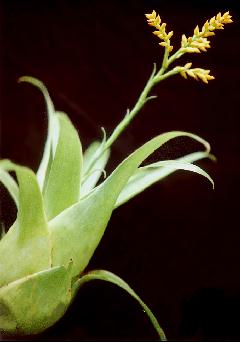
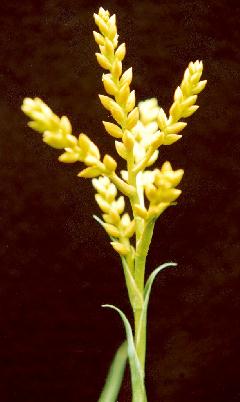
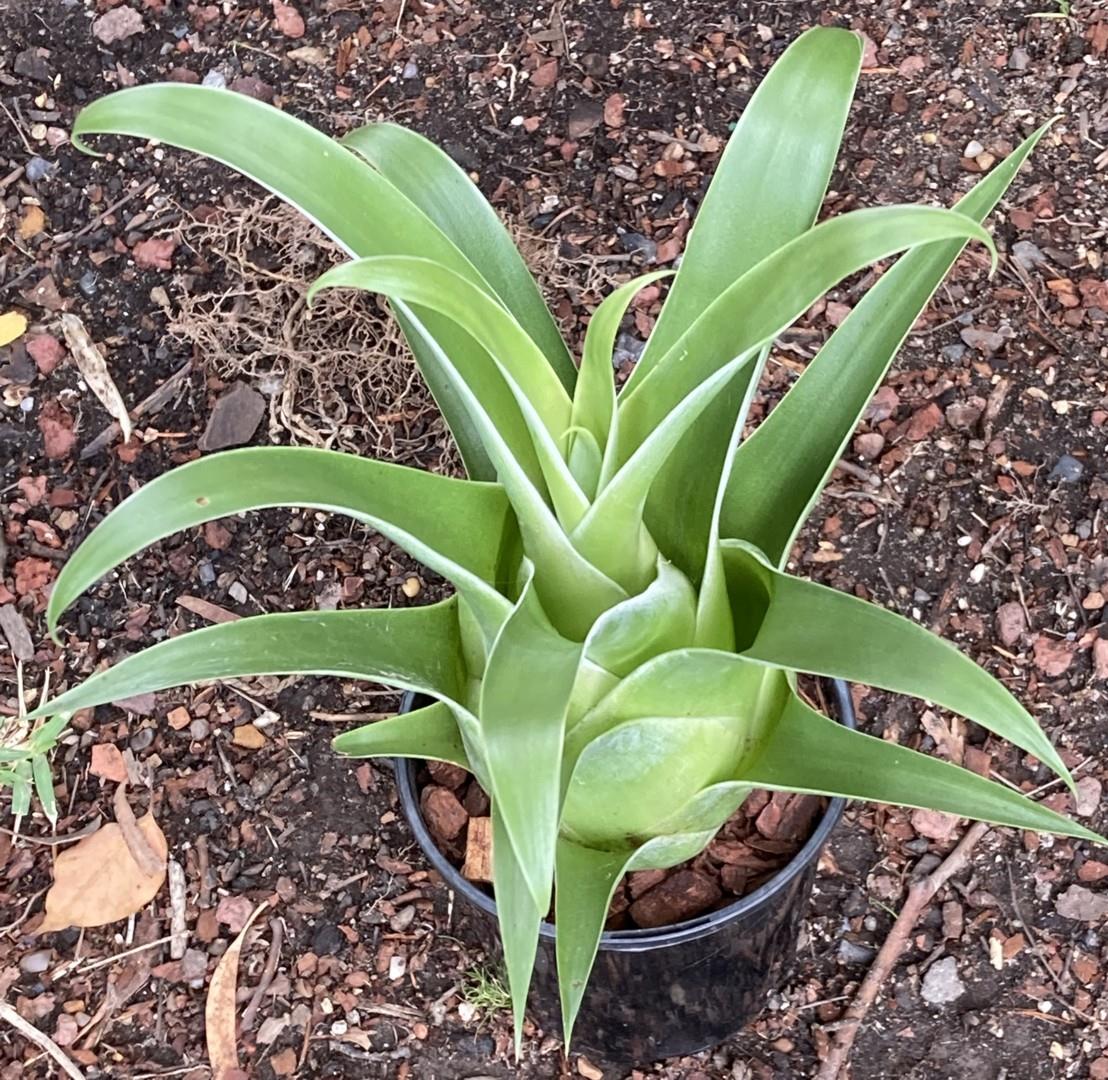
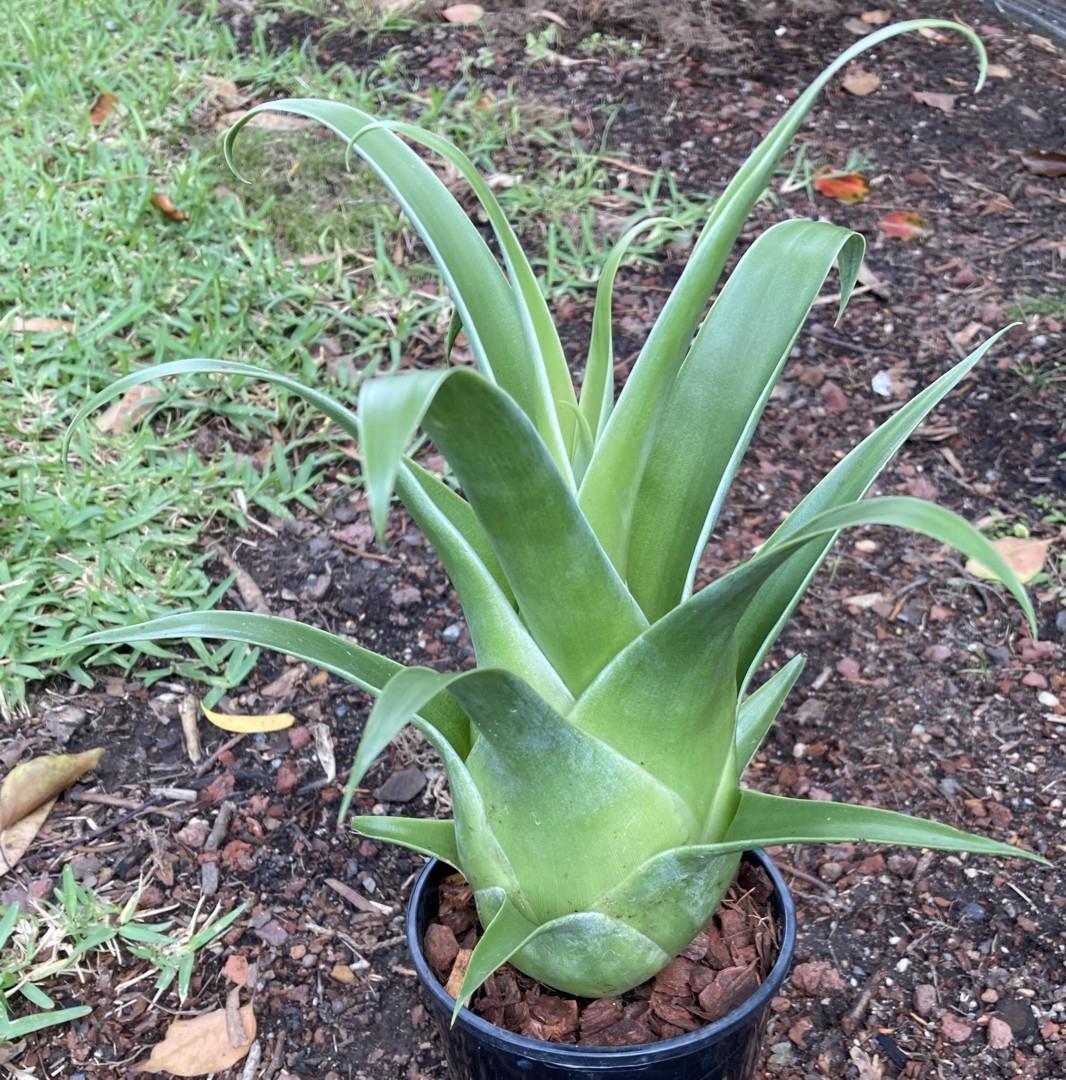
| Ken Woods 11/04 |
Ian Hook 03/24 |
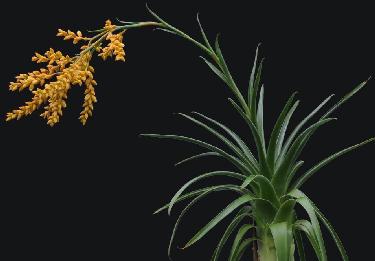
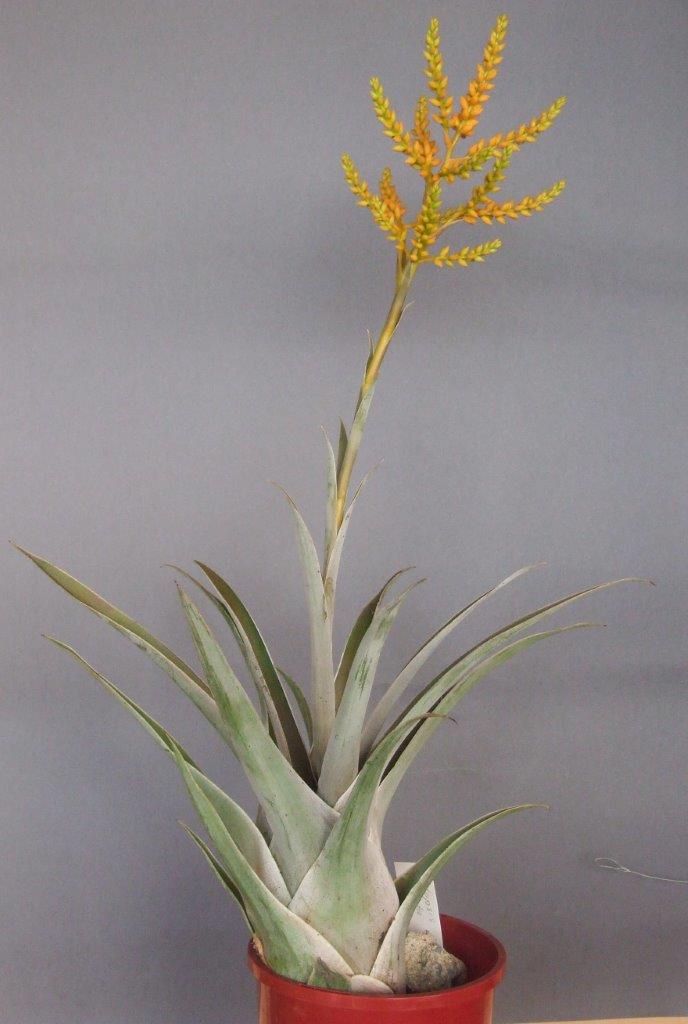
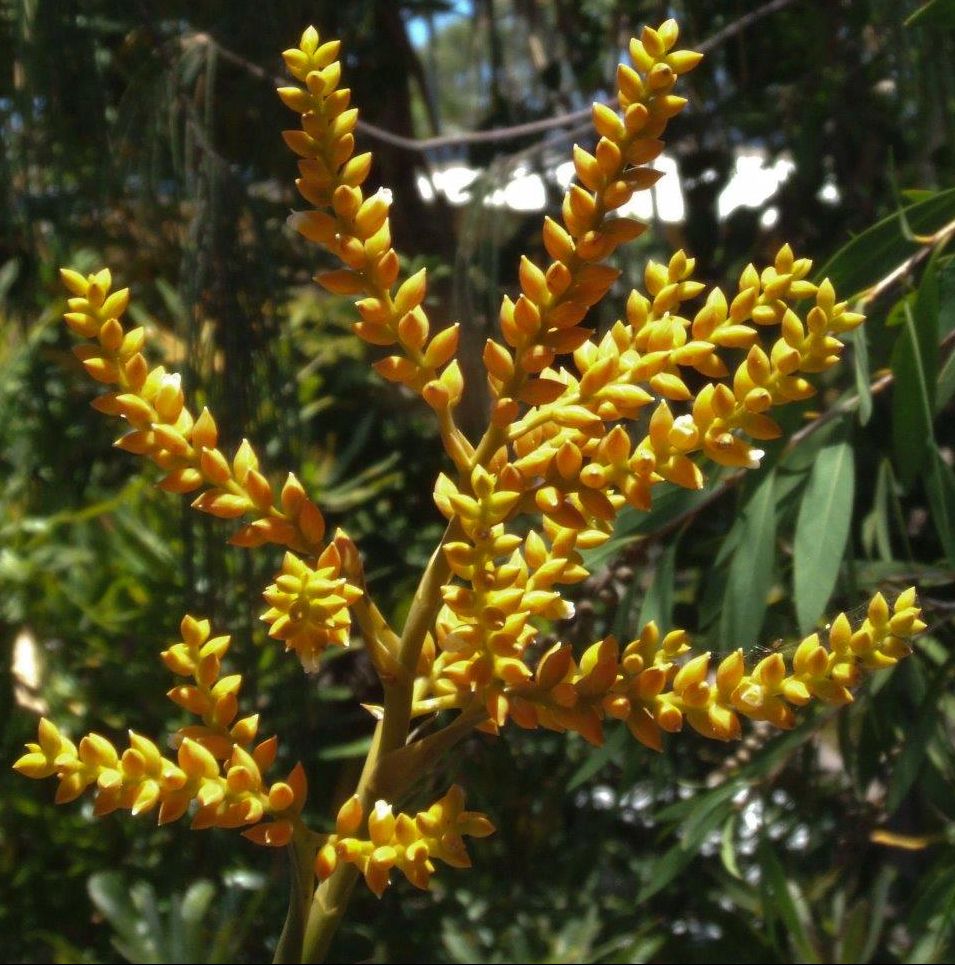
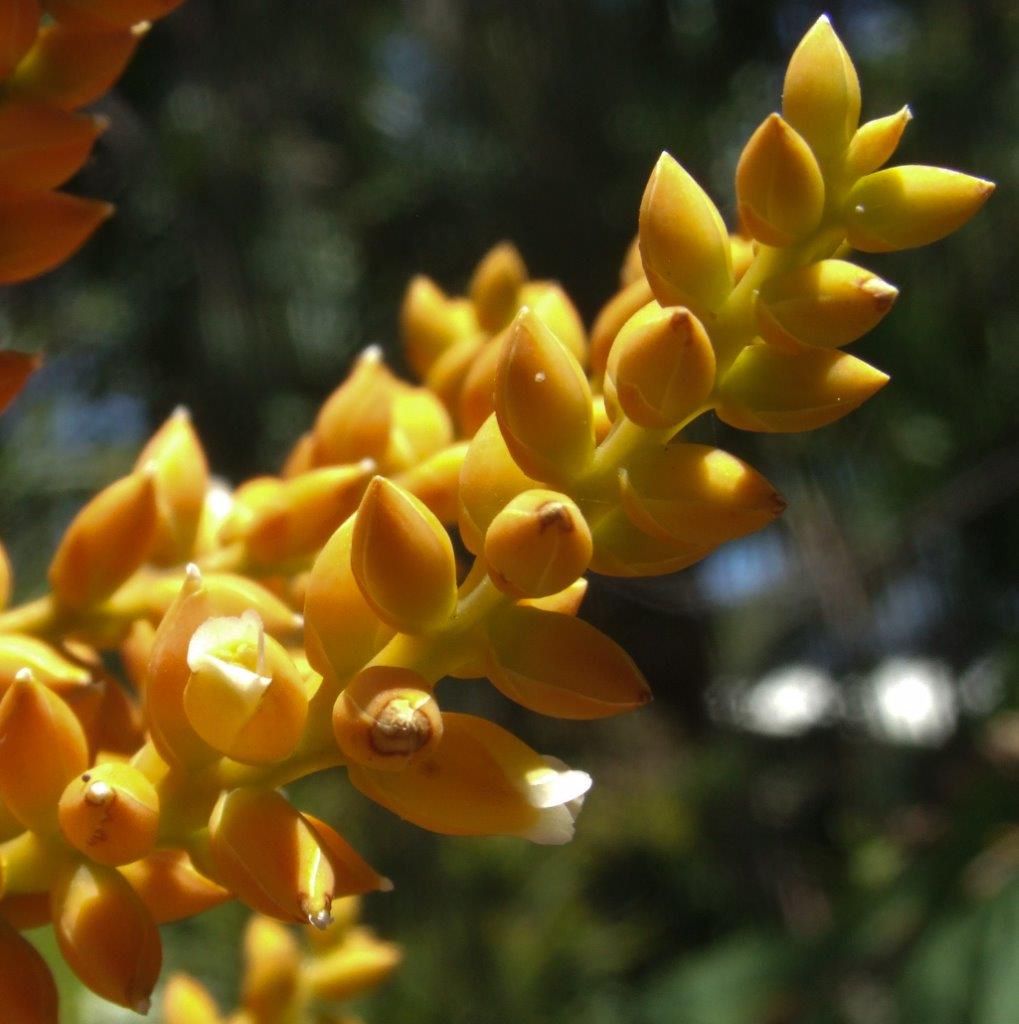
| 'Female Plant'. Peter Tristram 12/10 |
Rob Bower 02/20 male plant |
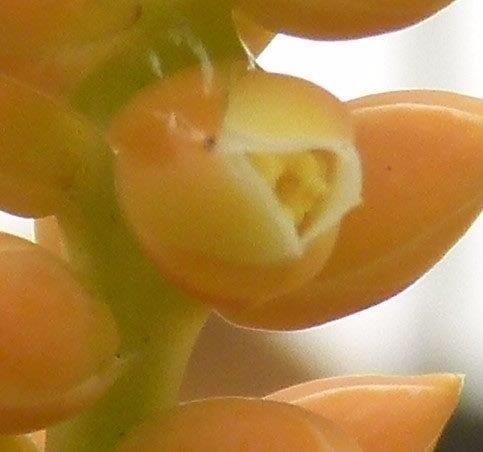
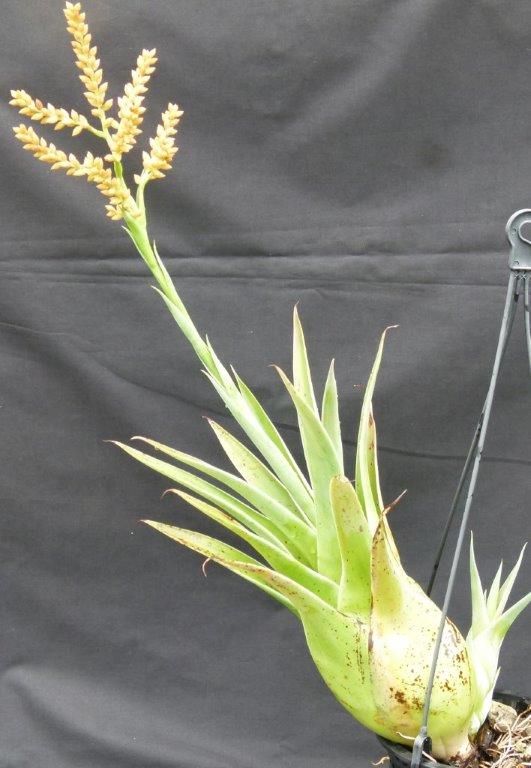
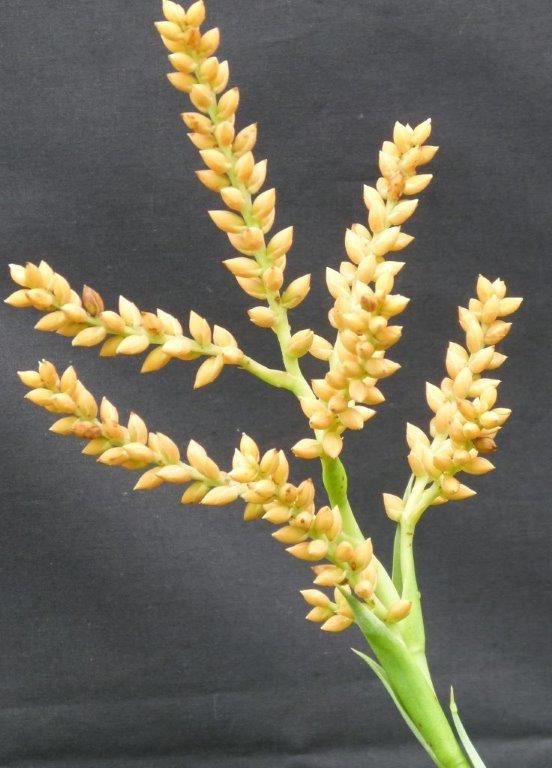
| Nanette Collingwood 02/20 |
Rob Bower ... "Not a tillandsia any more but an attractive form."
Peter Tristram ... "A lovely Catopsis subulata, male form I’d say."
Rob Bower ... "Male form?? dioecious (ex-)tillandsia? I had no idea they existed. Are there many?
I have a smaller lighter textured form but its very slow and not flowering. Peter is the female form different in vegetative form?"
Chris Larson ... "The "female" flower is not actually female but complete - it has both male & female parts - and therefore can self . The "male" only produces pollen - ie only has male parts.
The other interesting thing, which someone may help me with a reference, or a correction: The seedlings only produce approx 20% female seedlings.What sort of survival mechanism is that?"
Rob Bower ... "Yes ‘One that works’ is always correct where survival and evolutionary strategies are concerned.
It's also almost always correct to note that a characteristic like the species producing only 20% female seedlings is there for good reason. In this case the species can do self-fertilisation from 20% of a population so it can always produce some seed – but because 80% of the population can't self-pollinate (inbreed) that means the species gets an advantage from forced outcrossing from that 80%. So it’s a compromise from species that can't self-pollinate (must outcross – like many tillandsia species) to allow a little inbreeding as a back-up. Some species of plants aren’t self-fertile until the last few flowers which are used as a backup if the plant cant find a supply of outcrossing pollen - which achieves the same result. That’s a long-winded way of saying ‘One that works’."
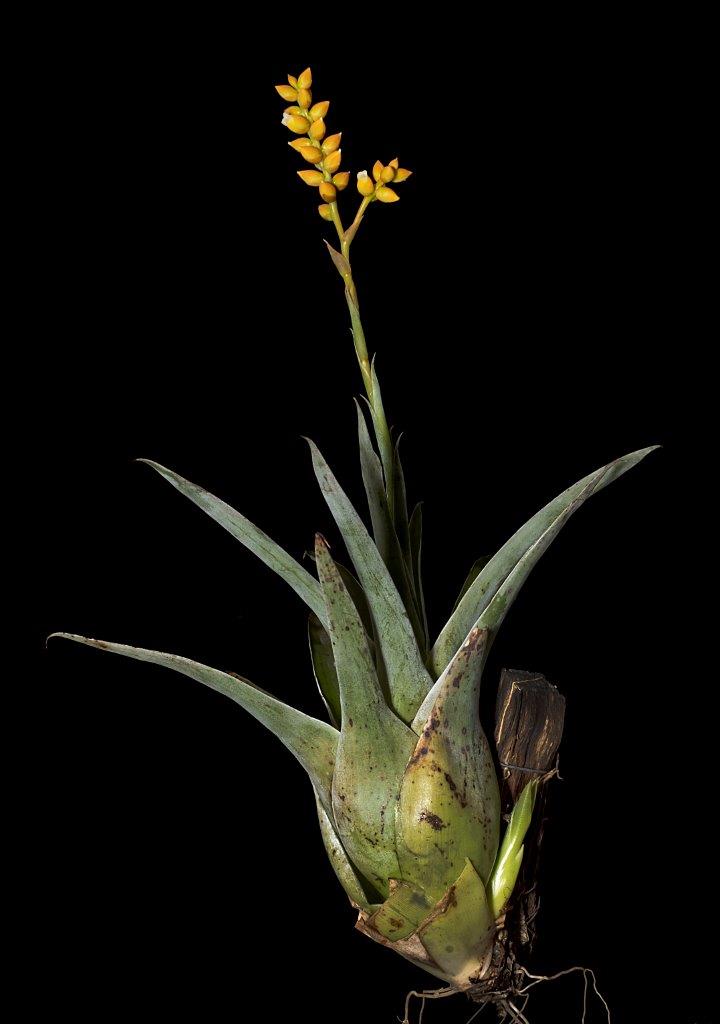
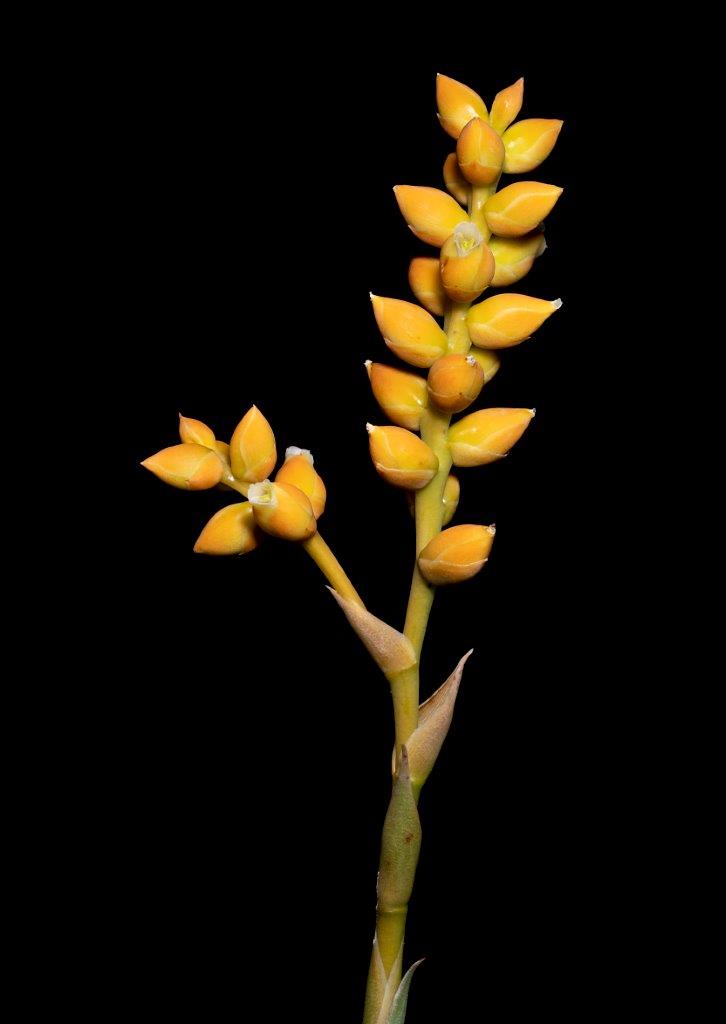
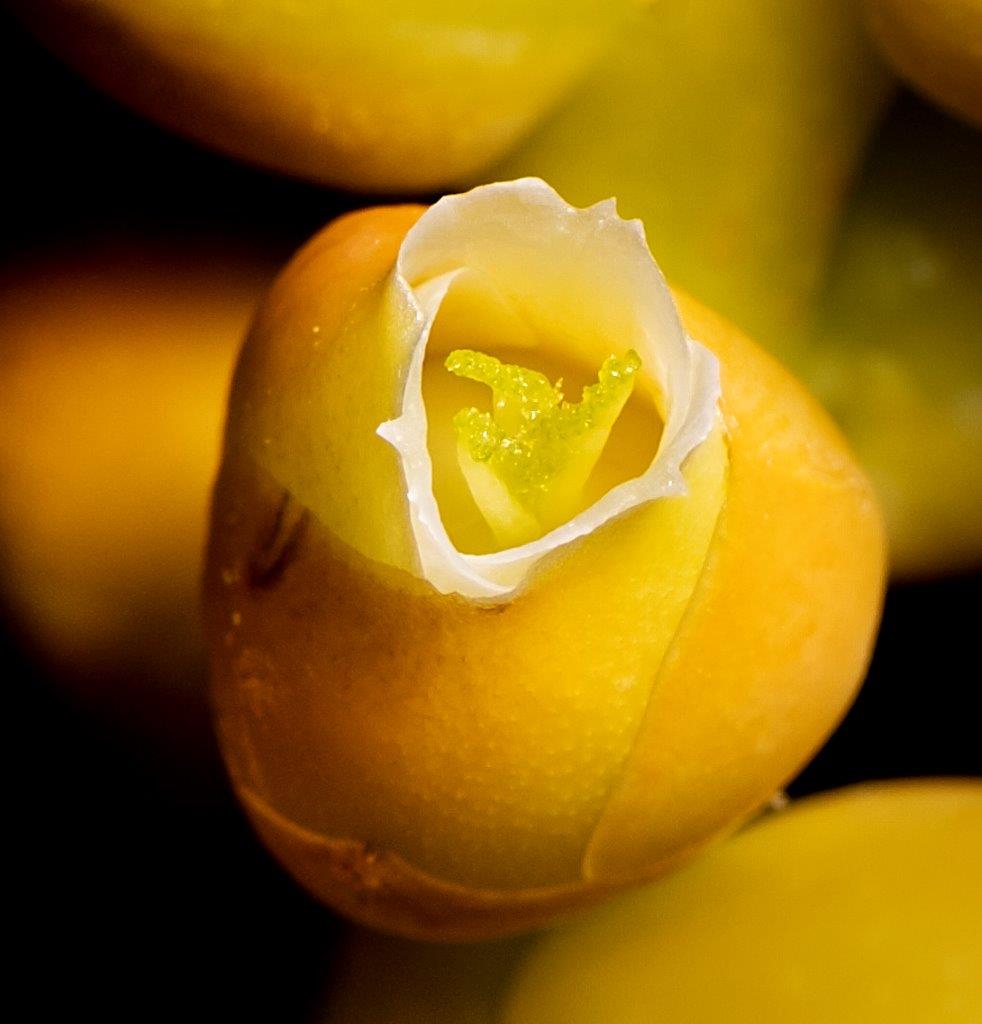
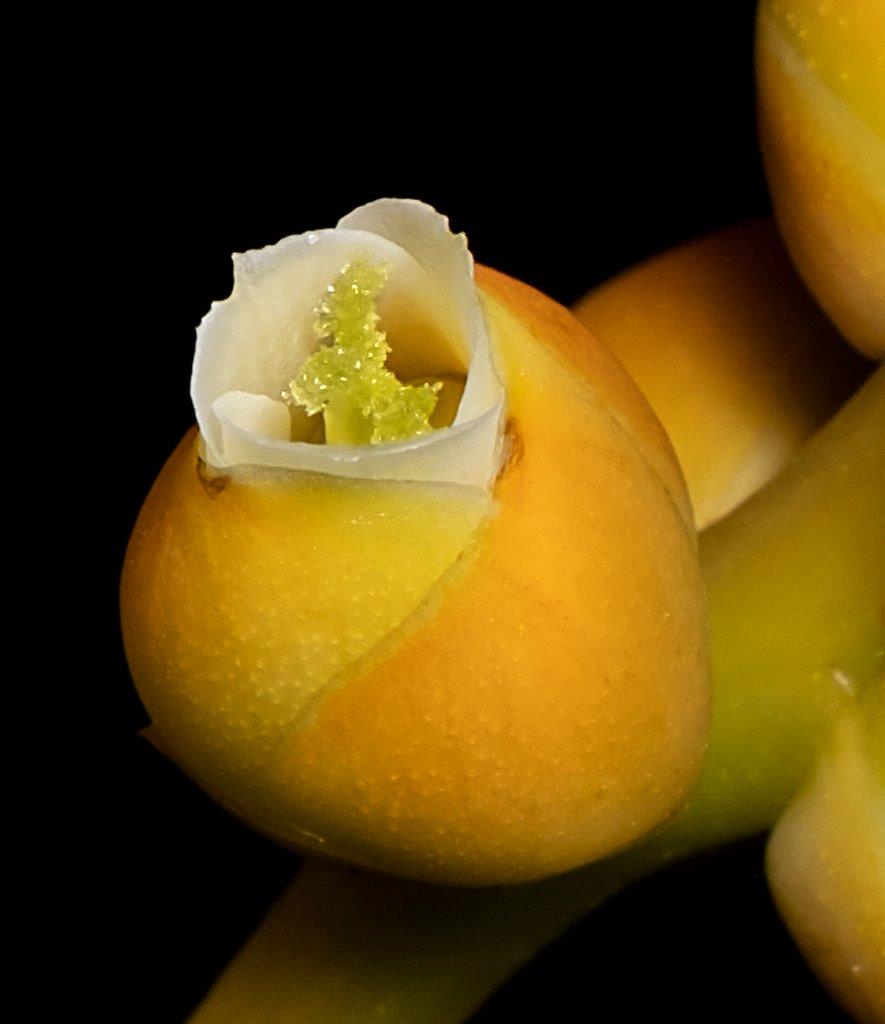
| Rob Bower 01/22 "female" (complete) plant |
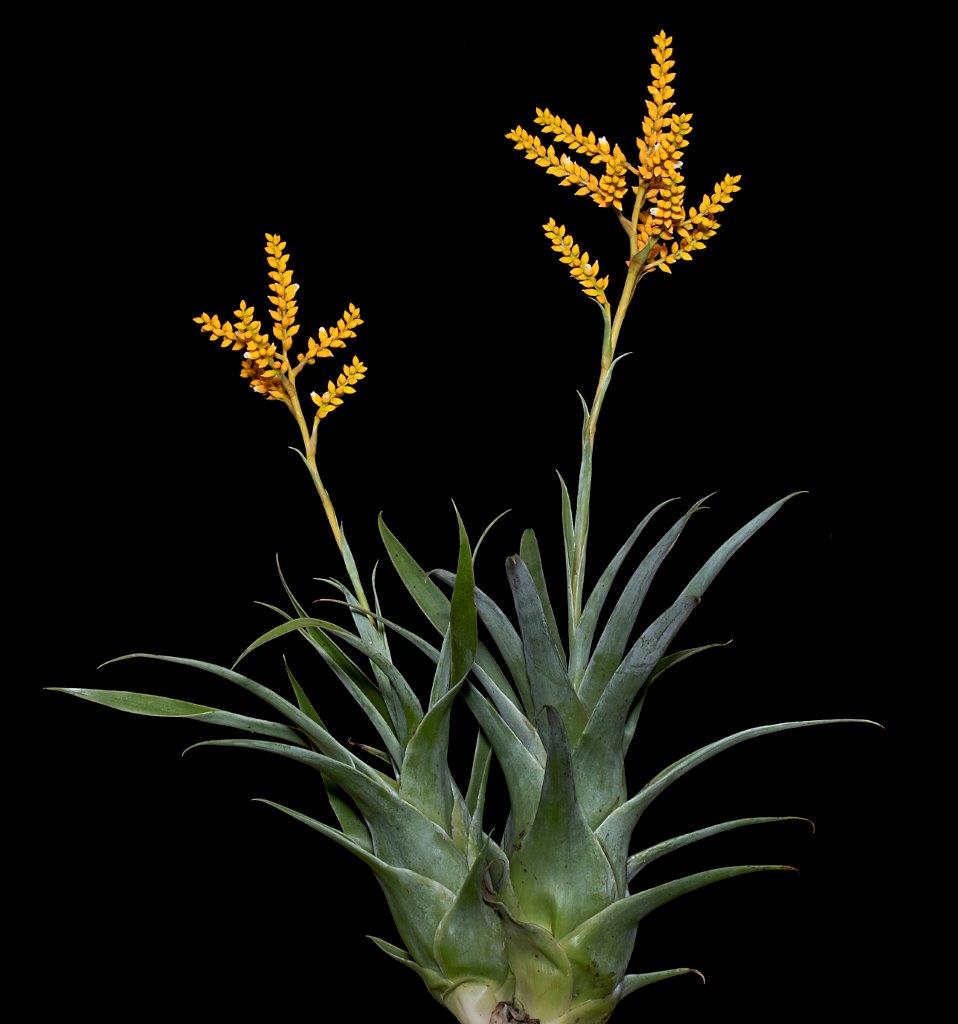
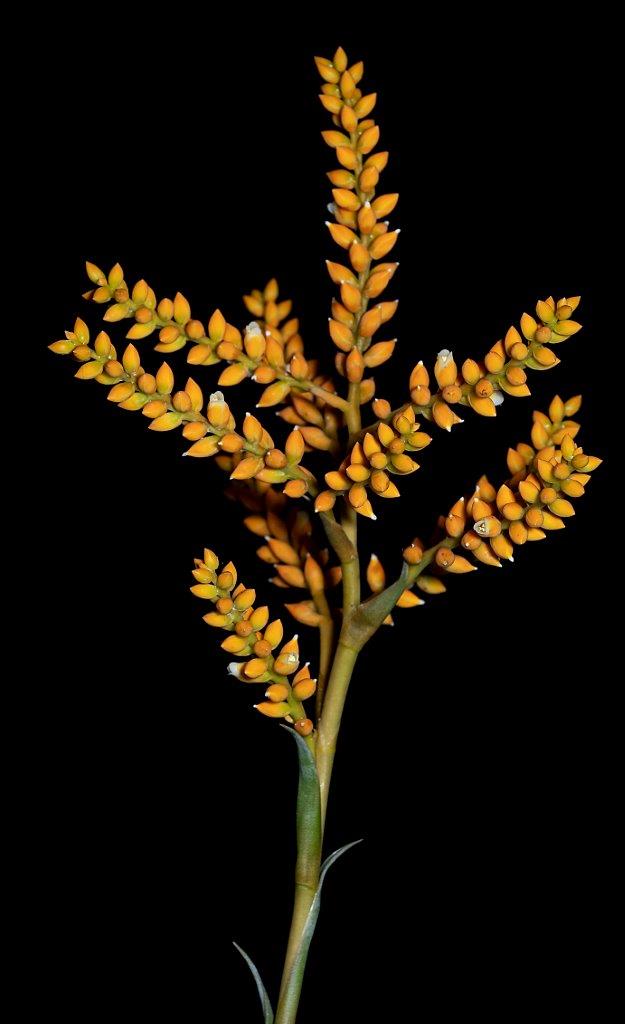
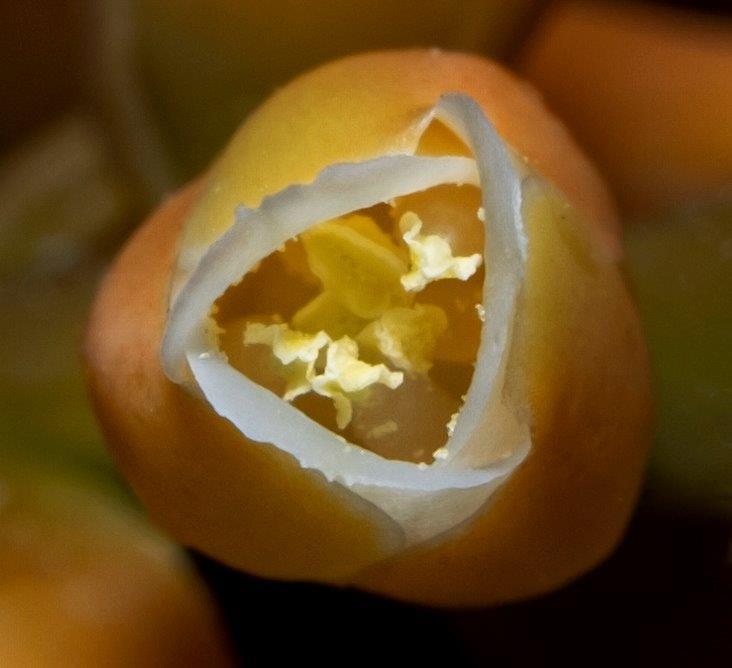
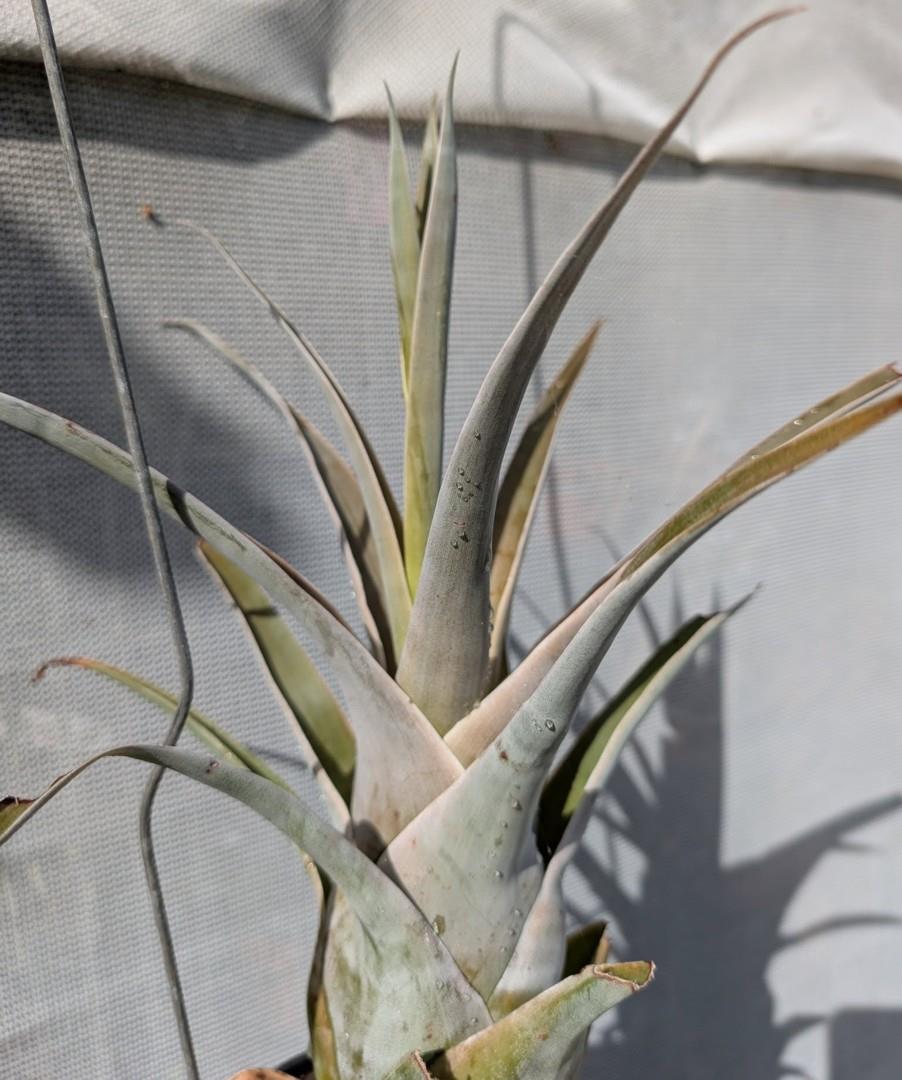
| Rob Bower 01/22 male plant |
Mitch Jones 10/25, female ex Bak |
Rob Bower 01/22 ... "This is an interesting looking species and also it is a dioecious species. My photographer friend Lin managed to get some clear closeups of the male and female forms of the flowers. In the female form the stigma is clearly visible and no male part present - and vica versa. So this species really doesn't want any inbreeding at all to the extent of dumping the benefits of having male and female parts (even as a last resort) in favour of presuming they will usually be able to find a plant of the opposite sex."
Rob Bower 09/22 ... "A while ago there was some discussion about Catopsis subulata male and female plants. My female have now set seed. There was also some discussion about what sex the offspring will be – unfortunately I deleted the emails and can't remember the details of the discussions. In any case I have some seeds if anyone wants some. It's a long term project but it would be interesting to record the sex ratio of the offspring."
Chris Larson ... "The conversation goes something like this.
The females are not really females but have both female and male parts - monoecious. The male ones only have the male parts.
The literature says that only 20% of seedlings are monoecious and the rest male. From memory that is a comment about Catopsis in general, and I think about plants in the wild.
Barry Genn says that his seedlings of C. subulata are approx 50% monoecious - the rest male. Barry may say I have this wrong - but that is what I remember of the conversation."
Rob Bower ... "Thanks Chris – Now I recall the discussion. The species keeps most individuals dioecious (less likely to self-pollinate) so there is less inbreeding but has the monoecious (females) as backup so some seeds are produced – rather than none at all."
Catopsis subulata L. B. Smith, Contrib. Gray Herb. 114:5, pl. 1, fig. 12, 1936.
Holotype: Purpus 335, Mexico, Chiapas, Fenia?, US!, staminate plant.
Desc from Palaci 1997
Plants in flower (15) 30-75 cm, dioecious.
Leaves in a tight, subglobose rosette, yellowish-green, becoming ochraceus with age, 15-35 cm long;
leaf blades linear triangular-lanceolate, 10-20 mm wide, the apex long-attenuate, acuminate,
leaf sheaths ample, broadly elliptic to suborbicular, 8-16 x 5-10 cm, sharply constricted into the narrow blades, (3) 5-12 times wider than the blades.
Scape erect;
lower scape bracts foliaceous, much longer than the internodes;
upper scape bracts linear-lanceolate, 1.5-6 (11) x 0.5-1 cm, the apex long-acuminate and recurved, exceeding the internodes.
Pistillate inflorescence once-pinnate, rarely simple, (5) 10-20 cm long, with 1-6 (8) spikes;
Iower primary bracts ovate-lanceolate, 1-4 x 0.4-1 cm, the apex long-acuminate, recurved;
spikes spreading, stipitate, 4-10 cm long, with ca. 12-20 flowers per spike, more or less densely arranged.
Staminate inflorescence once or twice-pinnate, (7) 12-20 cm long, with (5) 10-30 spikes;
lower primary bracts ovate-lanceolate, 2-7 x 0.7-1 cm, the apex acuminate, often recurved, ± equal or longer than the sterile bases of the spikes;
spikes spreading, 3-5 (7) cm long, with ca. 20-30 flowers per spike, densely arranged. Flowers functionally unisexual, sessile.
Pistillate flowers:
floral bracts widely elliptic, 6-8 x 5-6 mm, 3-5 mm shorter than the sepals, the apex acute to subobtuse, the margins narrowly hyaline;
sepals yellowish green, turning orange at maturity, asymmetric, subcoriaceous, smooth or very faintly nerved, 9-10 x 6.5-7.5 mm, the apex obtuse;
petals white, triangular elliptic, 9-10 x 5-5.5 mm, scarcely exceeding the sepals. Staminate flowers:
floral bracts triangular 4-5.5 x 2-4 mm, membranaceous, acute, the margins very narrowly hyaline,1-3 mm shorter than the sepals;
sepals yellowish green, turning ochraceus-orange with age, subsymmetric, subcoriaceous, faintly nerved, 6-7 x 4-5 mm, the apex obtuse;
petals white, narrowly triangu
ar, 5-6 x 2-3 mm, barely exceeding the sepals.
Capsules ovoid, 13-14 x 6-7 mm.
In pine-oak forests, s. Mexico, Honduras, and Guatemala, 500-2000m, endemic. In flower from (April) June to August.
Catopsis subulata L. B. Smith, Contr. Gray Herb. 114: 5; pl. 1, fig. 12. 1936.
Desc from S&D
Plant flowering 3-6 dm high.
Leaves many in an ellipsoid pseudobulb, 15-30 cm long, obscurely brown-punctulate;
sheaths ample, elliptic, about twice as long as the blades and sharply distinct from them;
blades narrowly triangular, attenuate, about 1 cm wide at the base, involute-subulate, contorted.
Scape erect, much exceeding the leaves; its bracts densely imbricate, lanceolate, acuminate, involute-subulate, recurved toward the apex.
Inflorescence bipinnate or tripinnate, dense or subdense, ovoid or pyramidal, 6-21 cm long, glabrous;
primary bracts much shorter than the axillary branches, broadly ovate with an acuminate involute recurved tip;
branches erect to spreading, simple or the lowest with 3 digitate spikes;
spikes short-stipitate, cylindric, densely flowered, 2-7 cm long.
Floral bracts broadly ovate, acute, slightly over half as long as the sepals at anthesis, thin, prominently nerved;
flowers functionally dioecious, suberect.
Sepals obovate, strongly asymmetric, 9 mm long when extended;
petals oblong, obtuse, included; white;
stamens unequal; style short.
TYPE. Purpus 335 (holotype US), Fenia (?), Chiapas, Mexico.
DISTRIBUTION. Epiphytic in forest, 1050-1600 m alt, southern Mexico to Honduras. MEXICO. CHIAPAS: Honduras, Siltepec, 9 Jul 1941, Matuda 4395 (GH, LL, US); La Gruta, 2 May 1952, Moore 6338 (BH, US); Sumidero, 6 Apr 1957, Foster 2971 (US); La Trinitaria, 26 Jan 1965, Breedlove & Raven 8415-A (DS); 26 May 1965, Breedlove 10042 (DS, US). GUATEMALA. BAJA VERAPAZ: Santa Rosa, 4 Apr 1941, Standley 91251 (F). HONDURAS. COMAYAGUA: Siguatepeque, 1936, Yuncker, Dawson & Youse 6429 (MO); El Rincon, Siguatepeque, 11 Aug 1962, Kimnach 395 (UC). MORAZAN: Zamorano to Tegucigalpa, Jul 1964, Gilmartin 939 (US); 961 US).
Updated 14/10/25


















